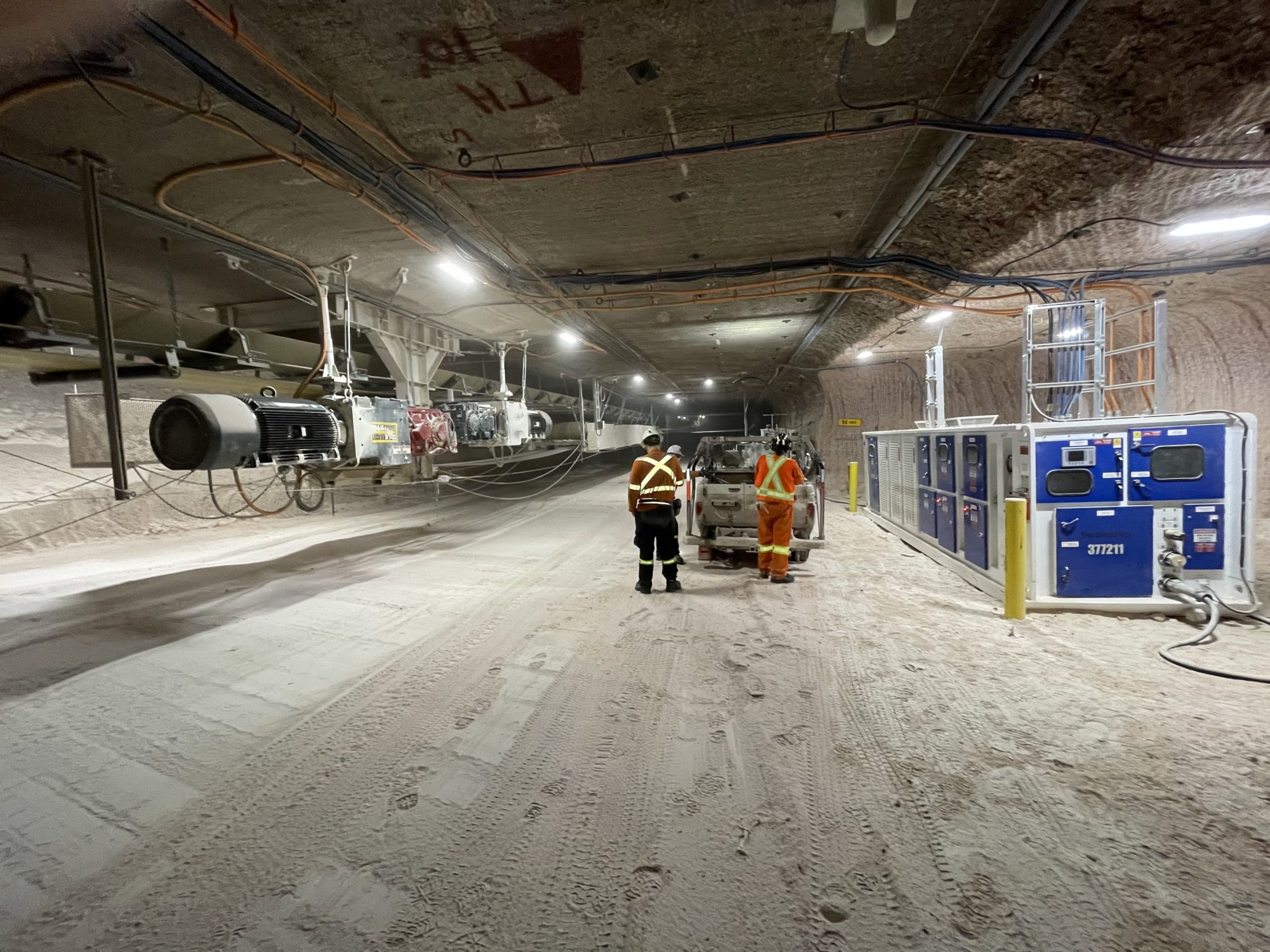Back in 2020, global potash mining major Nutrien began the rollout of a private 4G LTE network – both on surface and 1 km underground in its potash mines in Saskatchewan, beginning with Rocanville. Much progress has been made in that time – as of today LTE has been installed above ground at all the Nutrien mines in Saskatchewan – Rocanville, Allan, Lanigan, Cory, Patience Lake and Vanscoy – while underground coverage is expanding all the time.
For the projects, Nutrien brought in telecommunication network consulting firm and integrator Ambra Solutions, to design and deploy the network, leveraging advanced radio technology from Ericsson. Ericsson has provided the LTE Radio Access Network (RAN) along with Massive IoT (LTE-M/NB IoT) which is upgradable to 5G NR. Ambra has provided the Ambra Intelligent Tracking System (IPS) and Ambra monitoring system along with services including engineering, 24/7 support, the licensed spectrum and SIM cards.
On the whole, the Nutrien legacy communications systems consisted of only an outdated analog phone system and a few Wi-Fi hot spots. Getting important operational and maintenance information from the mine face to the control room required someone to travel underground to the nearest Wi-Fi access point, which could take hours. Or they would have to physically carry relevant pages copied from a paper logbook to the control room.
Ambra worked with the Nutrien team to analyse the tunnel conditions and communication requirements, then conducted extensive testing to determine the best approach. The consistency of potash and the shape of the tunnels were the two main challenges since, unlike other types of mines, the tunnels in potash mines are low and wide and the rock is very soft. It is very difficult to propagate a radio signal in a low-ceilinged tunnel made of soft rock like potash. To add to the challenge, electricity was only available at the tunnel intersections and in certain areas of the mine. So Ambra had to experiment in the field and use its propagation model to find the best locations for the radio antennas.
“Nutrien has charted a road to significantly increase our potash production to meet the world’s food needs, and this LTE and IoT technology will allow us to get there,” says Justin Stade, Director of NPK Digital Transformation, Nutrien.
Ambra determined that the optimal location for each radio base station at key underground intersections where multiple tunnels meet. Ambra states: “The performance results exceeded our expectations. For example, the LTE network we deployed supported 21 Mbps over 1.3 km in the tunnels, whereas Wi-Fi could only maintain 8 Mbps over about 300 m. Moreover, LTE provides this coverage at a fraction of the cost of Wi-Fi.”
It adds that not only did the Ericsson radios deliver the performance Nutrien needed, they also build in redundancy to provide resiliency for maintaining communication even if there is a component failure somewhere in the network. Eric L’Heureux, President and CEO at Ambra Solutions: “Additionally, Ericsson makes it very easy for us to reconfigure the system if we need to change the topology or expand the network. If 5G is needed in the future, Nutrien can just activate the license without replacing hardware. There’s really nothing that prevents us from making changes in the LTE network as Nutrien’s needs change.”
“We knew Ericsson provided carrier-grade equipment in our public LTE sector and that the technology is built to operate reliably in very harsh conditions. Another great thing about Ericsson equipment is the ability to build redundancy into the infrastructure, so we have resiliency to maintain communication even if there is a component failure somewhere in the network,” commented Chad Skiba, IT Manager for Potash, Nutrien.
Underground workers have readily available communication throughout the mine and with the control room. This makes it possible to digitally transmit data in seconds instead of taking hours for someone to travel to a phone or Wi-Fi hot spot. As a result, Nutrien is able to provide a safer, more efficient working environment while driving higher mine production.
As an example, Nutrien’s mines are filled with kilometres of conveyors that move mined potash to the surface, as well as vehicles (including a growing number of electric vehicles) and other mining equipment. Workers can now open up a manual or standard operating procedure for a piece of equipment on their smartphones. If a problem arises with the equipment, someone can simply take a smartphone picture and send it instantly to maintenance rather than getting in a vehicle and driving hours to report the issue. And with new mobile apps, like push-to-talk, voice communication with supervisors or the control room is now instantaneous from anywhere in the mine.
Ambra is now working with the Nutrien team to deploy Internet of Things (IoT) sensors on vehicles, equipment, and systems like ventilation. Combining sensor data with analytics and machine learning, the company will be able to get predictive maintenance intelligence to avoid production downtime and further improve safety, productivity, and environmental quality. Their ultimate goal is to create a truly connected mine where business managers have real-time information to make better decisions, faster, and with more confidence.











